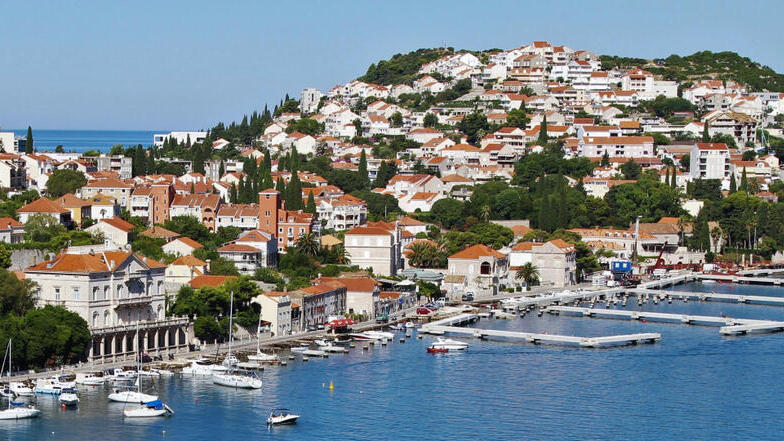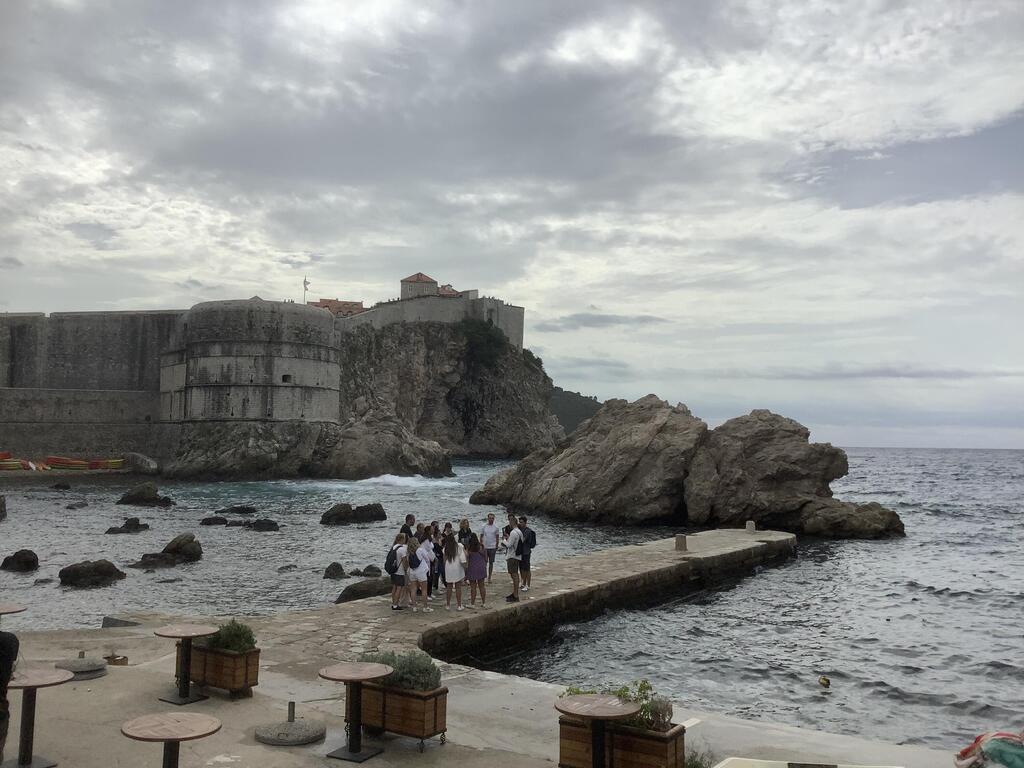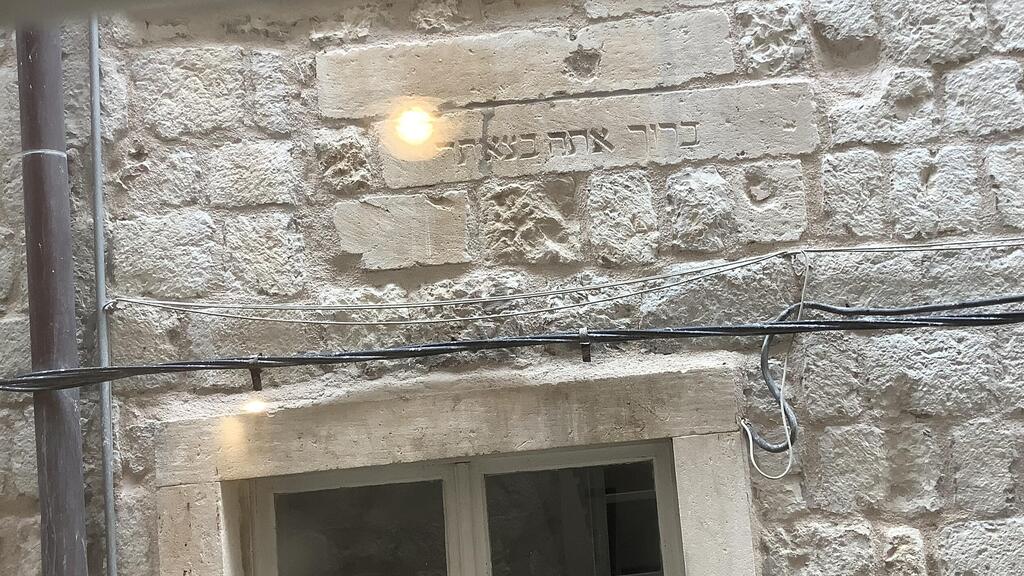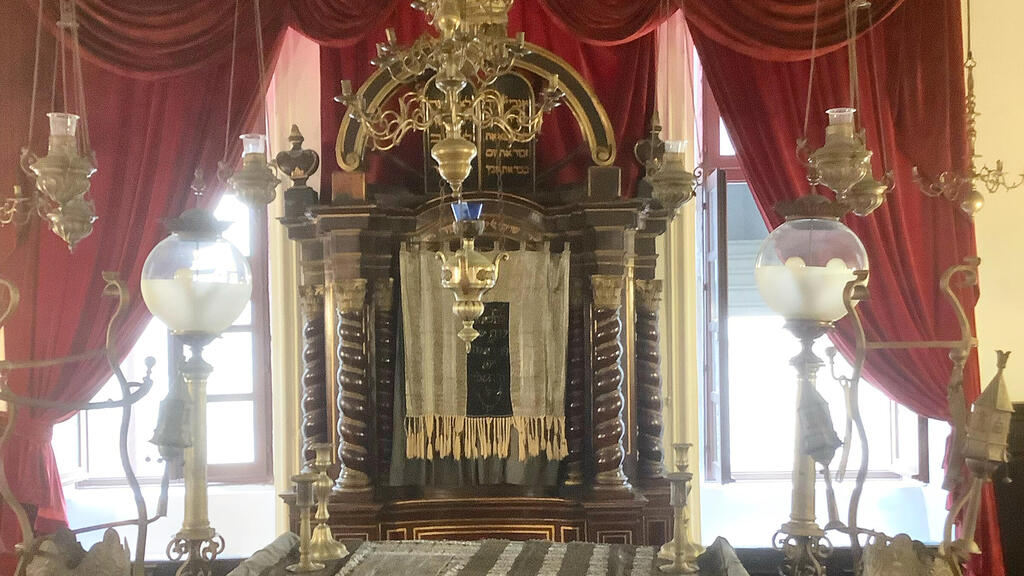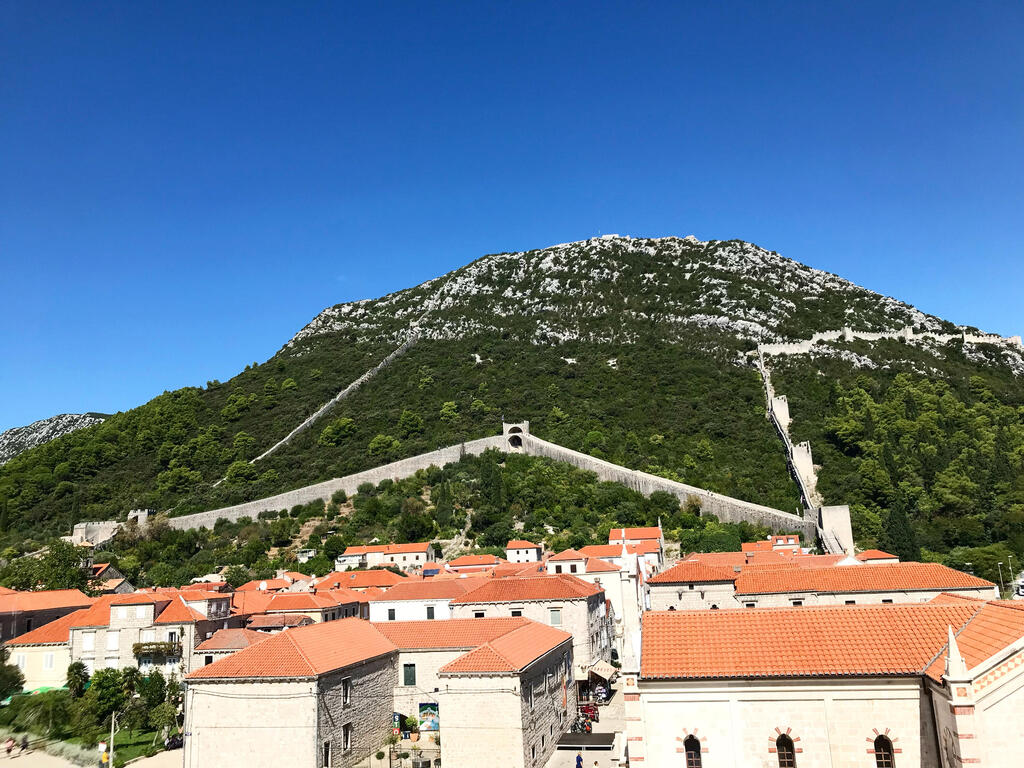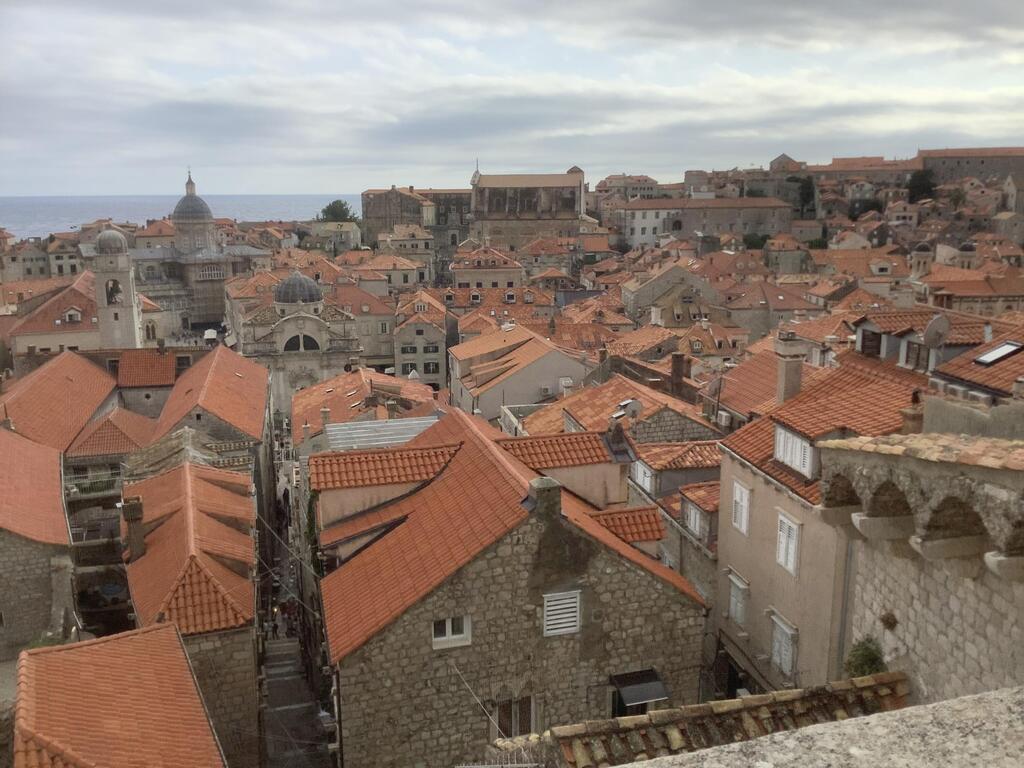Centuries before ocean liners and jet travel were modes of transportation, Dubrovnik was an important international port in southeastern Europe, attracting merchants, immigrants and visitors from faraway lands.
And long before television was invented, this magnificent city of formidable stone walls and red-tiled roofs was a magnet for tourists of all nationalities – one of which was the legendary George Bernard Shaw, who wrote admiringly of the destination.
The beauty of its medieval architecture was eventually to earn the Old City recognition as a UNESCO World Heritage Site.
But there is no doubt that, in addition to the coveted UNESCO classification, the recent HBO blockbuster Game of Thrones has given the city a major boost in popularity among international tourists. For it is here that filming on location of one of the iconic spots in the miniseries— Kings’ Landing— took place, in a rocky cove overlooked by Dubrovnik’s northern walls.
But we get ahead of ourselves. In real life, the city with the natural harbor that juts out into the Adriatic Sea was founded as Ragusa in the 7th century and renamed Dubrovnik in the 12th century. The city-state was heavily fortified in a manner befitting that of a true maritime power – one which rivaled those of Venice and Ancona in the Middle Ages and Renaissance era.
Between the 14th and 18th centuries, Dubrovnik ruled itself as a sovereign city-state that prided itself as a bastion of liberty: indeed, the word libertas was inscribed on the flag under which its ships sailed, and deservedly so: slavery was abolished as early as 1418, and in the 16th century it welcomed Jews who had been expelled from Spain and Portugal.
Jews were already living in Dubrovnik, however, having arrived from France and Italy as early as the 14th century, according to Israeli-Croatian historian and researcher Matija Singer, who also guides Jewish visitors along the two streets known for being Jewish neighborhoods. The tour – whose highlights Singer has also documented in a YouTube video – includes a Sephardic synagogue that dates back to 1680, making it one of the oldest in the Balkans.
Today, the synagogue serves a tiny, dwindling community and holds services only on special occasions and High Holidays. The building housing the sanctuary is primarily a museum, displaying priceless artifacts that have been preserved for generations. Arguably, its most interesting feature is the benediction engraved on the stone walls across the lane opposite the exit: “Barukh Ata B’tzetekha” – Blessed are you as you depart – a blessing also painted over the lintel of the inner doorway.
Aside from the churches and civic buildings worth entering in Dubrovnik, a sightseeing must is to walk atop the city walls, with its observation spots looking down on the inner sea of red-tiled rooves, and the outer sea of the blue waters of the Adriatic. Stunning vistas are also on display while enjoying fine dining. at the Dubravka Restaurant perched directly over King’s Landing, or sipping a drink at the summit of the city’s cable car.
With all of Dubrovnik's superlatives, no visit to this part of Croatia's Damatian Riviera would be complete without venturing northwards along the coast, to two completely different yet equally fascinating towns: Ston and Korčula. Once again, en route, you will find yourself pulling over to the side of the road time and again to admire breathtaking views.
The first stop along the way, just an hour from the big city, is Ston – a small village with a huge story: in fact, no fewer than three claims to fame. First and foremost, are the impressive walls that march uphill for miles and have earned the nickname the “European Great Wall of China.”
Their construction, which dates back to the 14th-16th centuries, was designed to protect the immensely valuable salt pans of Ston, a source of considerable wealth for the region. The sprawling salt works – which glisten brilliantly in the bright sun – are still in operation today, and an informative video recounts the history of this underestimated vital resource.
Last but not least, especially for connoisseurs, are the oyster farms of Ston, where the world-famous flat-shelled oyster species are cultivated. Many local producers offer excursions on their boats to the oyster fields in the salty, dazzlingly clear waters of the marshes, where they reveal the mysteries of raising the mollusks from tiny discs to sizable crustaceans – followed by tastings of the freshest possible seafood, hauled straight up to your plate from the shallow depths. (Naturally, this delicacy, among others, may also be consumed at one of many restaurants specializing in seafood, notably Bakus in Ston, and/or Kamenice in the heart of Dubrovnik.)
The attractions of Ston are accessible as a day trip from Dubrovnik (including as an organized tour), but this should not serve as an excuse to forgo another relatively nearby jewel – the island walled city of Korčula, which is reached via a 30-minute ferry ride from the mainland. (The ferry can also accommodate cars.)
Korčula is like a miniature Dubrovnik, but with its own bragging rights – legend has it that explorer Marco Polo was born here, in the year 1254. While this factoid is in dispute, two facets of his life are not: there has long been a home in the city belonging to the Polo-Depolo family – and galley captain Marco Polo was imprisoned here after Genoa defeated Venice in the naval battle of 1298. It is while incarcerated that Polo chronicled his exploits in Mongolia and China, thus ensuring Korčula’s place in the history of literary annals.
Korčula resembles its bigger urban sister in many respects: just about every day of the week, one of the quaint churches with excellent acoustics plays host to a classical music concert; and one can eat very well. Two al fresco dining experiences are recommended: seaside at the mIchelin-starred Lešić Dimitri Palace, and on the deck of the restaurant Adio Mare, overlooking the Polo domicile.
On a warm sunny day, a fun thing to do is to go down to the local marina and catch a water taxi to a nearby island – such as Lokrum in the Dubrovnik lagoon, or Stupe near Korčula – and wade from a beach (or jump from a jetty) into the incredibly clear waters of the calm and refreshing Adriatic Sea. You might even find yourself sunbathing alongside tame baby elk that have wandered over from the nearby forest.
Finally, there is recent, welcome news for Israelis wanting to travel to Croatia. For years, the country – with its hot springs and spas in the north, and its thousands of kilometers of coastline comprising the longest riviera in the Balkans – has not been easily accessible, as there were no direct flights from Tel Aviv. Now, however, the El Al subsidiary Sun D’Or, which operates in the spring and summer to popular holiday destinations in Europe, has announced non-stop flights to both Zagreb, the capital, and Dalmatia in the south, via the gateway Tivat airport in neighboring Montenegro.
Convenience and affordability have now combined to make Dubrovnik and its environs one of the most attractive nearby destinations for your next vacation,


